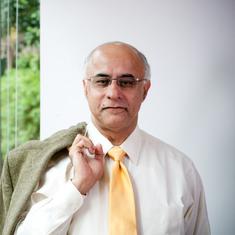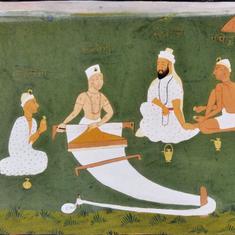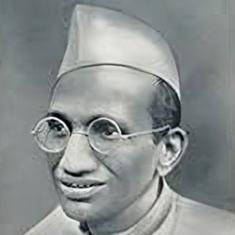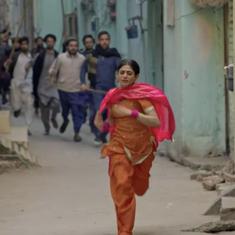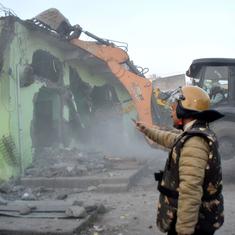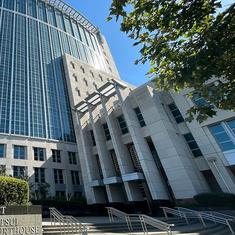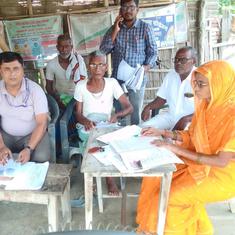There’s been a great deal of activity on the pristine lawns of the Delhi Gymkhana lately. The lines that make the tennis court have been meticulously measured on the carefully manicured grass inside the arena that will host 3800 spectators this weekend. This is the venue of India’s next Davis Cup tie, against Denmark.
It’s an important World Group 1 Playoff tie in which the winner stays in the second rung of the marquee men’s tennis team event and the losing team drops down to World Group 2. India has never fallen below Group 1.
And after quite a while now, the Indians have a sizeable squad to bank on to keep afloat their Davis Cup stature.
Specifically, it’s the return to the tour of Yuki Bhambri that has the Indian dugout upbeat. The 29-year-old has battled several injuries. But whenever he has been fit, he’s managed to push himself up the ranks to the point that he’s twice broken into the top 100.
He returned to the tour earlier this year after knee surgery and rehab, and has climbed to 590 after starting the year at 1050. And with Bhambri back in the line-up for the first time since 2017, it’s an unusual problem of plenty the Indian team faces ahead of the draw ceremony on Thursday.
“We’ve always had the issue of not having too many players to choose from. Generally, it’s been a straight forward selection,” India’s Davis Cup coach Zeeshan Ali told Scroll.in.
“But as the coach, I’m glad we have more players this time. Having Yuki back is a huge plus for us. Barring the injury problems, he’s a top 100 player for us.”
Bhambri is still the third highest ranked Indian singles player available for the tie, behind World No 170 Ramkumar Ramanathan and No 246 Prajnesh Gunneswaran – a former top-100 player himself.
On Thursday, captain Rohit Rajpal will need to declare which of the three players will be nominated to play the opening two singles rubbers in the best-of-five match format. Once that is done, he’ll have another problem facing him when selecting the doubles team.
The squad has two doubles specialists in World No 32 Rohan Bopanna and local-lad Divij Sharan, who has slipped down to 142. But in recent weeks, Ramkumar has emerged as a top doubles proposition.
The 27-year-old won two consecutive ATP events in Adelaide and Pune while pairing with Bopanna to break into the top 100 doubles rankings. In the next two weeks he teamed up with Saketh Myneni to reach two back-to-back Challenger finals in doubles, winning the first.
And there’s a good chance that he might receive Rajpal’s nod to pair up with Bopanna when they take on the Danes in the sole doubles match on Saturday.
“I’m still contemplating,” Rajpal said in a press conference on Wednesday. “We’re playing a few sets. The courts are playing a bit differently, one has a higher bounce than the other. By tomorrow I’ll take a final call. We’ll have a meeting tonight. Still keeping it open this evening.”
According to Ali though, it isn’t just a three-way battle for the two doubles spots.
“As far as this tie is concerned, we’ve got Rohan, Divij, Saketh, and Ramkumar, and Yuki is also a good doubles player. They’re all match sharp, they’re all timing the ball well, this has been ideal preparation,” Ali added.
The grass affect
The Indian team assembled in New Delhi on February 23 to begin preparing for the tie.
On paper, there is the strong expectation that the hosts will come out with a win given the difference in rankings between the two sets of players – the only Danish player who may have caused concern in singles, World No 88 Holger Rune, has decided to skip the tie.
In place of him, the team will be led by World No 305 Mikael Torpegaard. Their next best player, Johannes Ingildsen, is ranked 785. And then in doubles they have their playing captain Frederik Nielsen, ranked 98.
A win is not a given, especially since the best-of-three-set matches provide a more levelled field, but the grass surface may provide a difference.
For decades, Indian teams have opted to host ties on grass since Europeans generally prefer clay or hard courts. Over the years though, Indian players too have had limited exposure to the zipping, low and often unpredictable bounce of a grass court.
“When we were growing up there used to be a lot more grass courts in India and we used to play a lot more tournaments in India. As the years went by a lot of those courts became economical hard courts,” Ali explained.
“These guys today don’t get to play on grass on a regular basis, but the important thing is that they have played on grass. Psychologically you know what to expect from it, what you need to do. That’s a huge advantage. And now with the camp, they’ve adapted much better.”
It’s also important to remember that Ramkumar had reached the final of the ATP grass-court event in Newport in 2018.
With Nielsen in charge though, the Danes have a player who has won the only grass Slam – Wimbledon in 2012. And it’ll come down to how well he can help his players prepare. And he’s confident.
“We’re not just here to make up the numbers,” he said.
On Thursday the final line-up for Friday’s matches will be declared. But for the first time in a while, the Indian captain has a problem of plenty.
India’s squad for Davis Cup:
1. Prajnesh Gunneswaran
2. Yuki Bhambri
3. Rohan Bopanna
4. Ramkumar Ramanathan
5. Divij Sharan
Reserves: Saketh Myneni and Digvijay Pratap Singh
Denmark’s squad for Davis Cup
1. Mikael Torpegaard (ranked 210)
2. Johannes Ingildsen (ranked 805)
3. Christian Sigsgaard (ranked 833)
4. Elmer Møller (ranked 1708)
5. Frederik Løchte Nielsen (captain)

